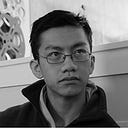Flat Earth: “Dune: Part Two”

Dyson vacuums. Target store brand snacks with the matte purple. Apple Vision Pro. The litany of friends whose living rooms are plucked from the Wayfair catalogue. Windows XP desktop backgrounds.
These are the things I thought about while trying to fight off fatigue during Denis Villlenueve’s Dune: Part Two. An empty film that aestheticizes, rather than directly engages with, questions of Messianic archetypes in the fight for liberation in space, collectively Villeneuve’s adaptation of Frank Herbert’s science fiction epic imagines battle of faith and resistance not as something that is derived from many individuals coming together to form a whole but as a product of all those people being sucked up into a boring uniformity, even as it fights against empire and fascism and colonialism.
Here is a vision of the future in which the signifiers of epic battles of good and evil, drawn from anything from Metropolis to Battleship Potemkin, get lacquered with a thick layer of chic matte silvery paint, the kind that flattens the trillions of pebbles in the sans of Arakis into looking like the newest iPhone model and makes its people clones instead of resistance fighters all with their own psychologies and histories and memories. It’s big and vast, like Lawrence of Arabia but with no love for the heat and certainly no affection for the Arabesque textures of its supposed cultural identities. How come all the Fremen basically look the same, have the same kinds of outfits, fight the same, can barely be distinguished in the whipping fog of sandstorms? If the Fremen are fighting against evil, illustrated here as the sleek shiny surfaces of black paint (fascism!), how come good looks so unimagiative? How come all the browns and oranges seem to be absent gradation and texture and specificity? Surely, David Lean found more colors and patterns in the Middle East to be in awe of than Villeneuve. And isn’t it insulting to suggest that, even if these are like “fake Arab cultures and aesthetics” that these people don’t have a distinct identity, much less a unique relationship to textiles? It’s not a question of balance or harmony (certainly devoid of the Zen influences of Herbert’s work, although happy to pilfer its MENA flavors). Somehow it appears it is merely science fiction and religious tropes dunked haphazardly in the varnish of something cool but without meaning.
Chalamet wears his coolness with such vacantness that he almost appears like the disaffected protagonist of Paul Schrader’s American Gigolo. Even as he spends much of the film protesting his place as the savior of the Fremen, his eyes are unblinking, like Paul has no particular feeling about the uncertainty or doubt of reality of the prophecy. He, and Zendaya, are in a class of younger actors who mumble their lines, for whom elocution and enunciation are foreign concepts, where voices are not so much instruments as they are cheap Teslas to get you from one line to the next. There is no subtext in any line reading just as there is no subtext in Villeneuve’s space opera in general. Conflict, heartbreak, trust and mistrust are all lasered into the performances po faced and plodding, Villeneuve once again betraying his ultimately very conservative ideas of moral ambiguity. Even if Chalamet is better as a brat (as in Lady Bird and Little Women), that petulance is nowhere to be found here, the trajectory of his inner life devoid of randomness or real complexity.
This aggressive ability to only vascillate between three or four colors, and even fewer textures or grains, has the uncanny ability to flatten any and all attempts at specificity and detail, what few there are. Even on other planets, even in the behemoth enemy ships, Dune Part two’s aesthetic is a void of immaculate black finishes, flat and wan. Variance — in its characters and story — can only be quantified and rendered with the sophistication of a restaurant that thinks it’s novel to have stemmed lamps.
All wouldn’t be lost if the filmmaker were aware of these sketches made with Apple Pen. Lord knows Star Wars was George Lucas’ attempt at synthesizing the preponderance of mythological tropes and archetypes, remixing Joseph Campbell’s The Hero with a Thousand Faces via Vietnam War era rage and speculative fiction (vis a vis East Asian) aesthetics. But neither Dune nor Villeneuve appear to be interested in playing with the frameworks themselves, the storied largeness of these characters throughout time and history and storytelling. The film isn’t self-aware enough to want to think about these archetypes AS archetypes, and yet can’t bear to imbue them with enough character or personality to make them emotionally textured.
Dune was made for the poster, the pleasure of staring into a folder of Creative Suite files, and Villeneuve is like if Adobe Photoshop’s gradient tool were a filmmaker: the impression of detail and nuance but mass manufactured and ready to be ordered by tapping your iPhone to the screen.
